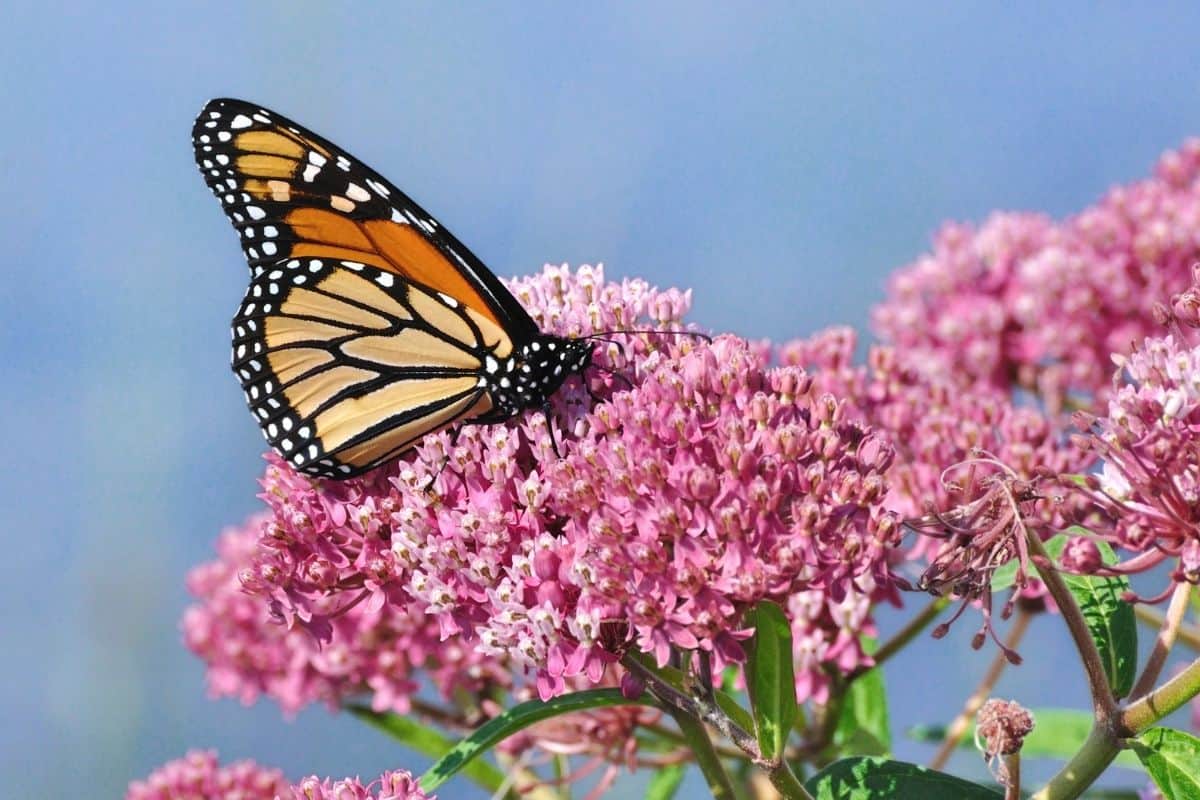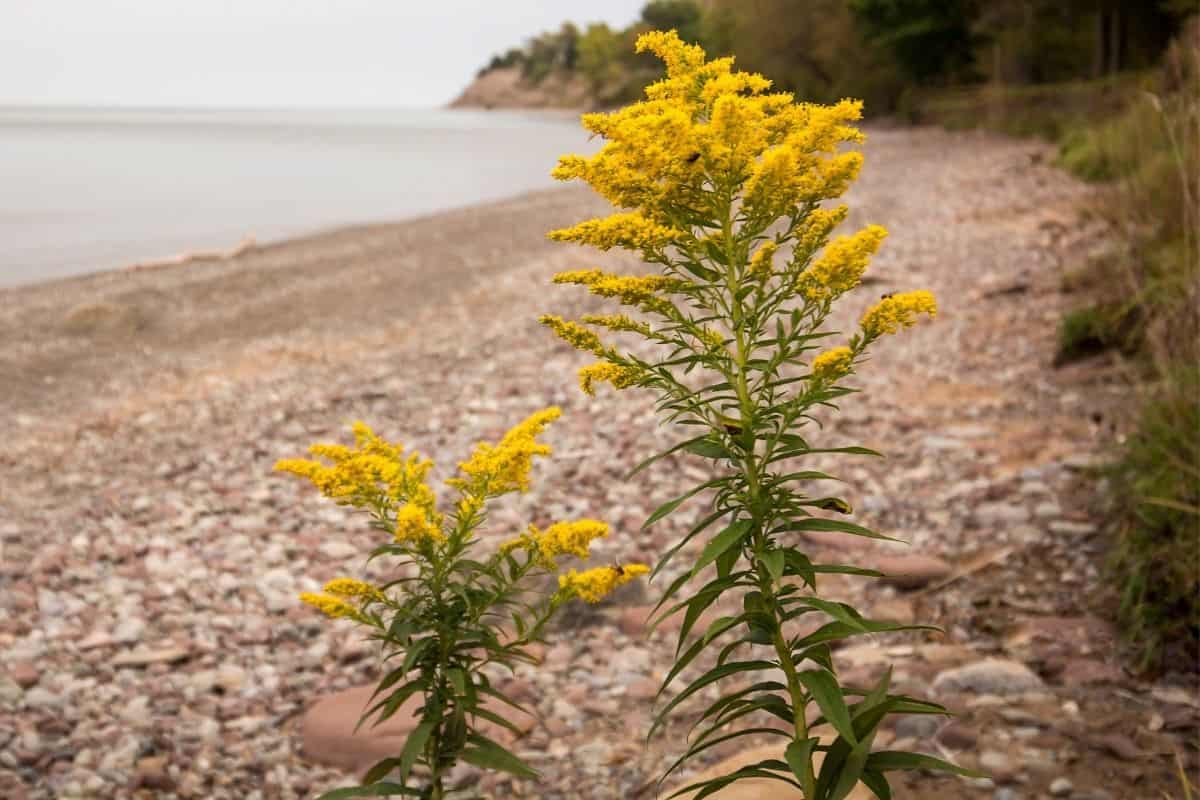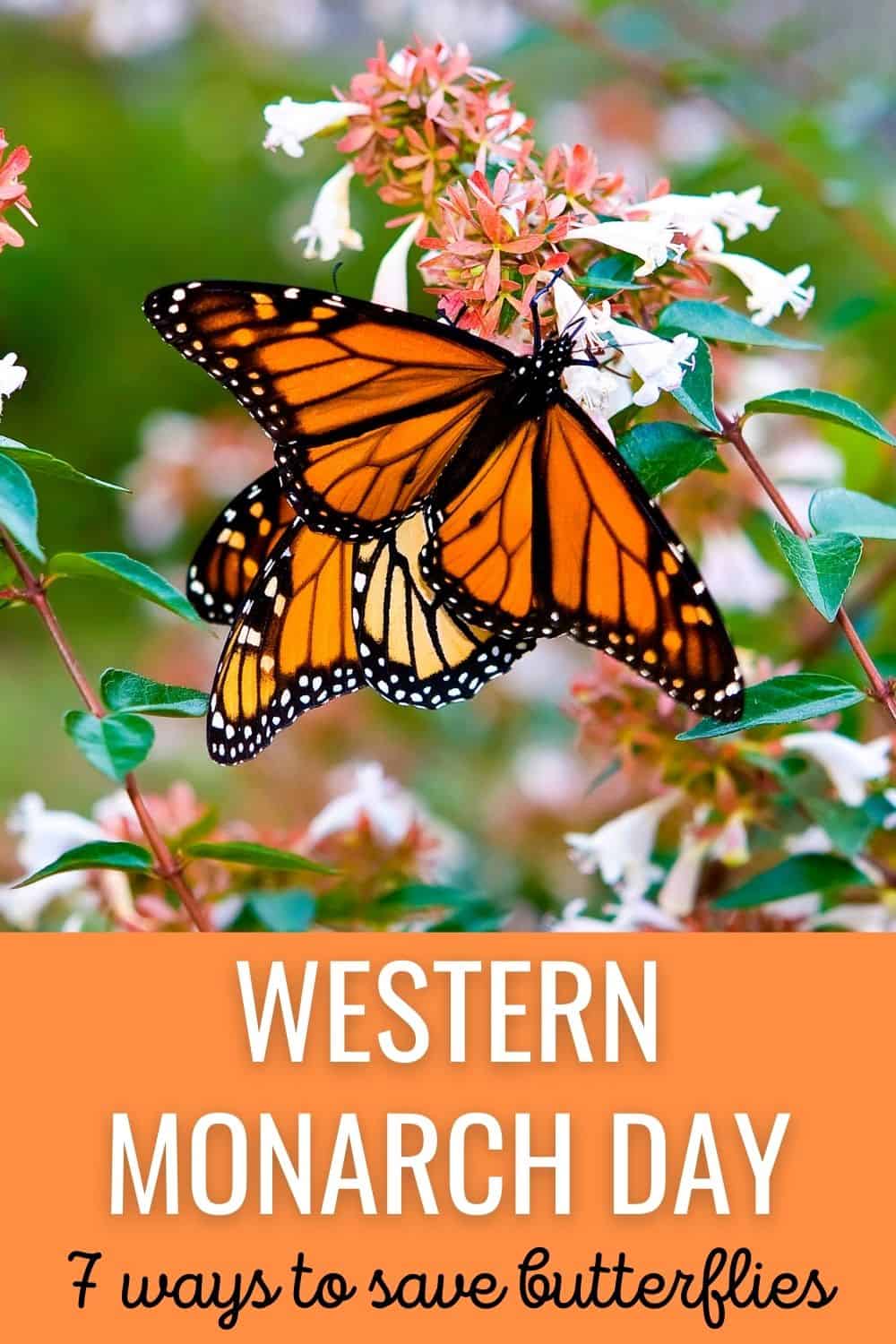Twenty-five years ago, in 1997, the Xerces Society’s Western Monarch Thanksgiving Count logged 1.2 million monarch butterflies overwintering in California. This past November (2021), just under 250,000 were observed. Although this represents a remarkable hundredfold increase from the previous year, the western monarch population remains more than 95% below its size in the ’80s. To help save and spread awareness about western monarchs, February 5 has been declared Western Monarch Day.

What is Western Monarch Day?
On May 5, 2004, California declared February 5 of each year to be Western Monarch Day. The bill recognizes that the central coast of California “contains the only regular major overwintering habitats in the world for the western monarch butterflies.” In addition to the huge environmental impact, this also positively affects tourism and offers educational opportunities for local schools.
While the bill itself does not explicitly state how to mark such an occasion, it seems to imply that Western Monarch Day should inspire a celebration of western monarch butterflies and efforts to protect them (hint: keep reading for more ideas!).
Take a look at these other special garden holidays.
What Are Western Monarch Butterflies?
Although monarch butterflies can be found in nearly all parts of the United States (as well as parts of Mexico and Canada), western monarchs are those that breed west of the Rocky Mountains and, typically, overwinter in coastal California and Baja California, Mexico. No genetic distinction exists between western and eastern monarchs (both Danaus plexippus), which sometimes cross paths.
Spring and summer generations of monarchs have a lifespan of just two to five weeks, but the fall generation overwinters and lives for six to nine months. These fall monarchs migrate to their overwintering sites in September and October, where they remain minimally active in clusters until January or February. In February and March, they breed and then disperse.
How To Celebrate Western Monarch Day
The Xerces Society lists five key steps for western monarch conservation under their Western Monarch Call to Action:
- Protect and manage California overwintering sites.
- Restore breeding and migratory habitat in California.
- Protect monarchs and their habitat from pesticides.
- Protect, manage, and restore summer breeding and fall migration monarch habitat outside of California.
- Answer key research questions about how to best aid western monarch recovery.
While the high-priority areas are within California and especially coastal California, people across North America can pitch in to help save monarch butterflies.
Washington, Oregon, Idaho, Nevada, Utah, and Arizona also provide important western monarch habitats. And monarchs, in general, can be found, depending on the time of year, from southern Canada to central Mexico and from coast to coast (except for the Pacific coast from Oregon northward).
So how can you help? Monarch butterflies need milkweed for food as caterpillars, nectar for food as adults, overwintering habitat, and protection from pesticides and diseases. With that in mind, here are seven ways you can help monarch butterflies on February 5 and every day.
1. Plant milkweed

Monarch butterflies lay their eggs on milkweed (Asclepias spp.), the sole host and source of food for monarch caterpillars. The loss of this important plant, due to agriculture, development, herbicide use, and mowing contribute to the decline of monarch populations across the continent.
Add milkweed to your garden to feed monarch caterpillars as well as other pollinators, like bumblebees. Although you may not be able to plant on February 5, you can research types of milkweed and purchase seeds.
Choose varieties of milkweed native to your region in order to best support the local ecosystem and increase the likelihood that your milkweed will thrive. Plants that grow wild in your area are better suited to local growing conditions, making them hardier and lower maintenance.
Never plant tropical milkweed (Asclepias curassavica), which can disrupt the monarchs’ migratory cycle and increase the spread of disease.
Below is a sampling of milkweeds native to different parts of the US. Note that many of these overlap and common milkweed is an especially important host plant throughout much of the eastern US.
West
- narrow-leaf milkweed (A. fascicularis)
- showy milkweed (A. speciosa)
Southwest
- spider milkweed (A. asperula)
- giant sand milkweed (A. erosa)
Central and Great Lakes
- prairie milkweed (A. sullivantii)
- whorled milkweed (A. verticillata)
Northeast
- swamp milkweed (A. incarnata)
- common milkweed (A. syriaca)
Southeast
- clasping milkweed (A. amplexicaulis)
- butterfly milkweed (A. tuberosa)
2. Plant nectar sources

In addition to milkweed for monarch caterpillars, it is important to provide nectar sources for adult monarch butterflies, which need the fuel for breeding and migration. Monarch butterflies require diverse nectar sources from spring through fall, as well as in the winter at their overwintering sites.
When planning a monarch nectar garden, remember to include a wide range of flowers, especially natives, to ensure that something will be blooming at all times of the growing season.
While monarch butterflies will feed on many types of nectar-bearing plants, the Xerces Society has compiled a list of plants that monarch butterflies have been observed feeding on. The following have the most documented observations:
- milkweeds (Asclepias spp.)
- blazing stars (Liatris spp.)
- beggarticks (Bidens spp.)
- thistles (Cirsium spp., except nonnative C. arvense)
- crownbeards or wingstems (Verbesina spp.)
- goldenrods (Solidago and Oligoneuron spp.)
- asters (Symphyotrichum spp.)
3. Protect overwintering sites

Monarch overwintering sites are destroyed or damaged every year by human actions such as development or tree trimming. If you live in coastal California, where western monarch butterflies typically overwinter, contact your local officials to encourage the protection of monarch overwintering sites.
You can also adopt an overwintering site, becoming an advocate for its protection and active management. The Xerces Society offers a comprehensive guide for how to do this.
Native fall- and winter-blooming nectar plants are important food sources for overwintering monarch butterflies, so consider planting flowers like California goldenrod (Solidago velutina ssp. californica) and coyotebrush (Baccharis pilularis) if you live in coastal California.
Do not plant milkweed near overwintering sites, or within five miles of the coast. Native trees are also important, like Monterey cypress (Cupressus macrocarpa), Monterey pine (Pinus radiata), and coast redwood (Sequoia sempervirens).
4. Avoid pesticide use
No matter where you live, pesticides harm pollinators. Avoid using pesticides, and talk to your favorite plant nursery about reducing their pesticide use in order to provide pollinator-friendly plants.
Research and implement alternative pest control methods in your garden, resorting to OMRI-certified organic pesticides as a last resort.
And don’t forget mosquito control: never use mosquito misters or vaporizers, which kill beneficial insects along with the mosquitos. Talk to local officials about limiting pesticide use in public spaces, like parks, as well.
5. Get involved in citizen science projects
Also called community science or participatory science, citizen science involves community members of all backgrounds in collecting and contributing meaningful data. It allows researchers to gather more data in a larger area in a shorter period of time than they otherwise would, turning what might be a near-impossible task into something manageable.
For western monarchs specifically, consider joining the Western Monarch Count in tallying and monitoring overwintering monarchs in coastal California, or report sightings of monarchs or milkweed to Western Monarch Milkweed Mapper.
For broader projects ranging outside of California, look into:
6. Create a habitat for all pollinators

When you plant native, nectar-bearing plants, you support not only monarchs but a wide variety of other pollinators as well. Mix some native flowers in with your existing garden, or consider planting a native wildflower meadow. Remember that flowering trees also provide nectar, especially in early spring.
Dead tree trunks, or snags, provide important habitat for some bees and beetles as well as other wildlife, so consider leaving them in place if it is safe to do so. In general, preserve natural spaces on your land for pollinators and other wildlife.
7. Spread the word

The first step to solving a problem is almost always education. Spread awareness about the plight of monarch butterflies and how people can take action to help them. Bring up the topic with friends, family, and coworkers (“I read an interesting article the other day about monarch butterflies…” or “Hey, did you know today is Western Monarch Day?”), or share about it on social media using the hashtag #SaveWesternMonarchs.
Help western monarch butterflies this February 5 by observing Western Monarch Day, and make your garden more pollinator-friendly. How will you celebrate?



